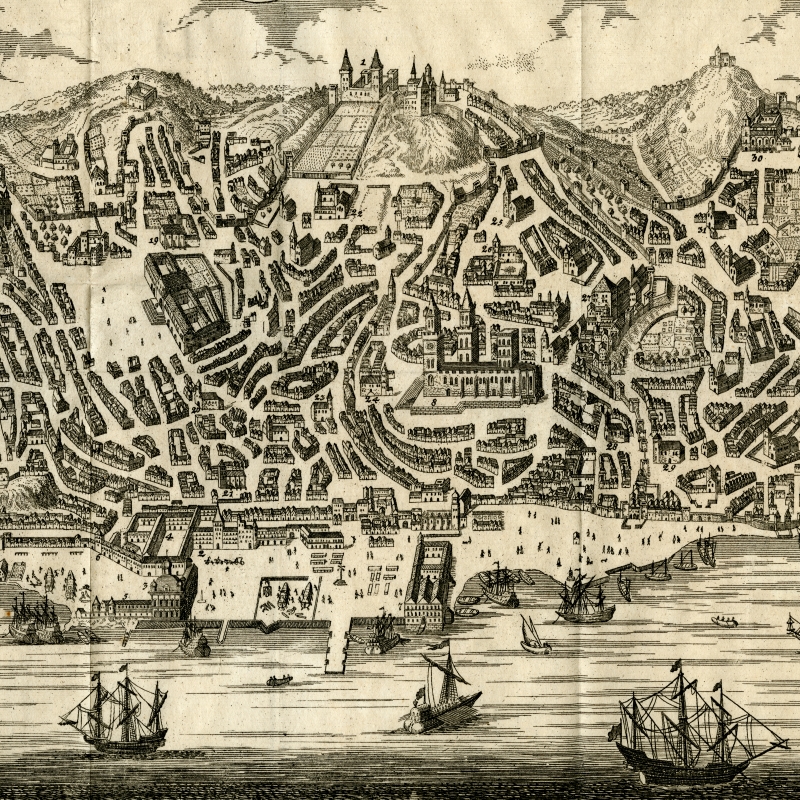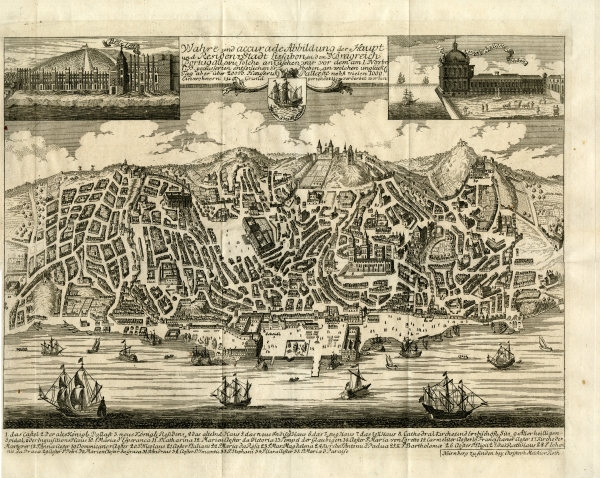Keith Moore investigates the links between Susan Sontag's portrayal of Sir William Hamilton FRS and a terrible earthquake in 1755.

I was lucky enough to see two volcanoes last summer: Etna, as I passed through Sicily, and Stromboli by night from the sea. Etna was, I think, the most impressive from distance, a classic brooding cone. Stromboli obliged us tourists with a brief pop from its river of fire – very much a damp November firework in volcano terms – before the boat turned for home. I’ve yet to see Vesuvius (on my to-do list) which is a constant presence in quite the best fiction about a Fellow of the Royal Society, Susan Sontag’s The volcano lover (1992).
I’m not a big fan of historical novels but Sontag’s reworking of the life of volcanologist Sir William Hamilton FRS (1730-1803) is intelligent and insightful. I suppose that any meditation on the nature of collecting is likely to appeal to a librarian and Sontag’s writing really sings when she considers the Cavaliere’s patrician reordering of the world in objects. One of the book’s felicities is that the volcano, the destructive instrument that fuels and enables much of Hamilton’s accumulations of the scientific and the antique, is the greatest collector of all, preserving whole towns in Pompeii and Herculaneum. Many of Hamilton’s later treasures, by contrast, would suffer erasure through blind fate: lost at sea or shattered, like the Portland Vase.
We tend to think of European cataclysm as belonging to the far past of Pompeii, but to eighteenth century virtuosi like Hamilton it was a highly current subject. That most appalling natural disaster, the Lisbon earthquake of 1755, occurred less than a decade before Hamilton’s first diplomatic appointment. The quake, its aftershocks, tsunami and fire resulted in the total destruction of one of Europe’s greatest capitals with a huge loss of life. If you are a city-dweller, try to imagine the effect on today’s London, or on New York. The architecture, libraries, galleries and archives of one of the world’s great exploring nations simply vanished.

Lisbon before the 1755 earthquake: panorama from this book
Eyewitness accounts of the disaster poured into the Royal Society from across Europe and beyond, such was the scale of the event. They were published in the Philosophical Transactions and remain harrowing. But in the furore, one curious paper was rather missed. Robert Whytt FRS (1714-1766) wrote 'An account of the Earthquake felt at Glasgow…also of a shower of dust falling on a ship' and described a vessel sailing between Iceland and Shetland being enveloped by volcanic ash. It was evidence of a big eruption of the Icelandic volcano Katla, just two weeks before the Lisbon earthquake. Some scholars have speculated that Europe-wide atmospheric effects from one were attributed to the other.
In Portugal, there were oases of preserved learning and I visited one recently at the University of Coimbra. It’s a couple of hours by train from Lisbon and right now has an exhibition on Portuguese Fellows of the Royal Society. I’m very proud of the Society’s Library but even I have to concede that Coimbra’s Biblioteca Joanina has the world’s most beautiful reading rooms. This eighteenth-century baroque masterpiece would be worth a visit on its own, but it is matched by superb historical museums containing the finest collection of scientific instruments you are likely to see. It’s easy to feel part of Sir William Hamilton’s world there and to contemplate what Lisbon lost.

